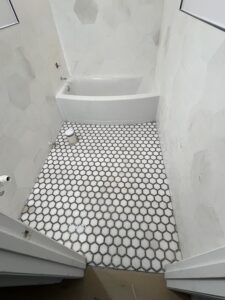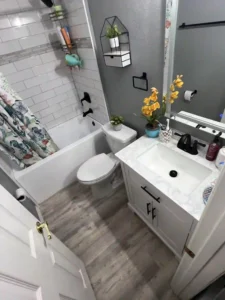
If the endless options for wood floor colors have you feeling lost in a forest of choices, you’re certainly not alone. Many homeowners find this a daunting decision, especially considering the long-term investment and the impact it has on the overall feel of a home. Should you go with a classic, timeless shade or embrace a bold, trendy hue? Do you want a smooth, uniform finish or something with more character and texture? Don’t worry, we’re here to clear a path through the confusion.
We’ll be sharing the common wood floor colors most homeowners choose and provide a step-by-step guide on choosing the best color for your home’s wood floor. Let’s start!
Common Wood Floor Colors
Choosing a color for your wood floor can be challenging, as there are so many options available, especially when considering different flooring installation techniques and finishes. However, there are several popular choices that consistently stand out for their versatility and aesthetic appeal. Let’s explore some of the most common wood floor colors:
- Brown: Brown is the classic and most traditional choice for wood flooring. It ranges from warm honey tones to deep, rich chocolate browns. Brown wood floors create a warm, inviting atmosphere and complement a variety of decor styles.
- White and Gray: These cool, neutral tones have gained popularity in recent years for their modern, airy feel. They can make a room appear larger and brighter, and work well with minimalist or contemporary styles. White or gray wood floors are often achieved through bleaching or staining techniques.
- Honey: Honey-toned wood floors have a warm, golden hue that evokes feelings of sunshine and happiness. They are versatile and complement many different color schemes, making them a popular choice for living rooms, bedrooms, and kitchens.
- Red and Orange: While not as common as brown or honey, red and orange-toned wood floors can add a touch of drama and personality to a space. These colors are often found in cherry or Brazilian cherry hardwood, and they are ideal for homeowners who want to make a bold statement.
- Dark Tones: For a more sophisticated, luxurious look, consider dark wood floors. Ebony, walnut, and jacobean stains create a striking contrast against light walls and furniture, adding depth and richness to a room.
- Natural: Natural wood floors showcase the unique grain patterns and variations in the color of each wood species. They are often left unfinished or lightly stained to preserve their natural beauty. Popular choices for natural wood floors include oak, maple, and hickory.
How to Choose the Perfect Wood Floor Color for Your Home
Choosing the perfect wood floor color is a significant decision that will affect the overall look and feel of your home for years to come. While personal preference plays a big part, several factors can guide you toward the ideal choice:
1. Consider the Room’s Size and Lighting
The size of your room and the amount of natural light it receives play a crucial role in choosing the right wood floor color. Lighter wood floors can visually expand smaller rooms or those with limited sunlight, creating an airy and open atmosphere. On the other hand, if you have a spacious room with ample natural light, darker wood floors can add warmth and intimacy without making the space feel cramped.
2. Think About Your Home’s Overall Style
Your home’s architectural style and existing décor should guide your wood floor color choice. Warm, rich brown tones like oak or mahogany complement traditional or classic homes, while light, cool grays or whitewashed finishes suit modern or contemporary aesthetics. For rustic or farmhouse styles, natural wood finishes with visible grain patterns add character and warmth.
3. Factor in Your Existing Décor and Furniture
The color of your furniture and other décor elements should harmonize with your wood floor. Light-colored furniture pops against darker floors, while darker furniture pairs well with lighter floors for a balanced look. Warm-toned décor calls for wood floors with golden or reddish undertones, while cool-toned décor benefits from wood floors with gray or ash undertones.
4. Account for Your Lifestyle and Maintenance Preferences
Consider your lifestyle and how you use the space when choosing a wood floor color. Durable hardwoods like oak or maple are ideal for high-traffic areas, while distressed or hand-scraped finishes can disguise scratches caused by pets. Darker wood floors are generally better at hiding dirt and dust, making them a good choice for busy households.
5. Explore Current Trends
Stay updated on the latest trends in wood flooring to discover unique options that could elevate your home’s style. Gray wood floors are currently popular for their versatility and modern feel. Wide planks can make a space look more expansive and luxurious, while matte finishes offer a subtle, natural aesthetic. Mixing wood tones can create visual interest and a truly unique look.
6. Test Samples in Your Home
Before committing to a specific wood floor color, always test samples in your home. Most flooring retailers provide samples that you can take home and observe in different lighting conditions throughout the day. Comparing samples against your existing décor and furniture will ensure the chosen wood floor complements your overall color scheme and style.
Frequently Asked Questions

What are some less common yet stylish wood floor colors to consider?
If you’re looking for something unique, consider wood floors with a hint of green or blue undertones. These can add a touch of personality and depth to a space, especially when paired with neutral walls and furnishings. Wood floors with a bleached or whitewashed finish can also create a coastal or bohemian vibe.
How do I know if a wood floor color will work with my existing trim and moldings?
It’s generally recommended to choose a color that is either slightly lighter or darker than your existing trim and moldings to create visual contrast. However, if you have white trim and moldings, you have more flexibility as they tend to complement most wood floor colors.
Can I change the color of my existing wood floor?
Yes, you can change the color of your existing wood floor through refinishing. This process involves sanding down the existing finish and applying a new stain or finish. It’s best to consult with a professional to determine the best approach for your specific type of wood and desired color.
Are there any wood floor colors that are more resistant to fading?
Generally, darker wood floor colors tend to show less fading than lighter ones. However, regardless of the color, it’s important to protect your wood floors from direct sunlight by using curtains, blinds, or UV-protective window film.
Wrapping Up
Choosing the perfect wood floor color is a journey that requires careful consideration of your home’s unique characteristics, your personal style, and your lifestyle needs. By exploring the options available, understanding the impact of light and space, and testing samples in your home, you’ll make the best decision for your home. Remember, your wood floor is more than just a surface – it’s a foundation for creating a warm, inviting, and stylish home.
At Miller 86, we can help you find the perfect wood floor color for your home and install it with the highest level of quality. Contact us today for a consultation!





